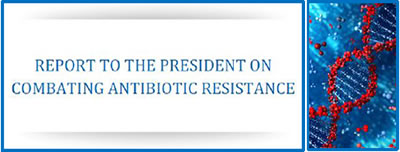Last updated:
Changing the Face of Diagnostics in Clinical Microbiology
Changing the Face of Diagnostics in Clinical Microbiology
November 4, 2014
Healthcare-associated infections affect approximately two million people in the United States each year, resulting in ~100,000 deaths. Antibiotic-resistant infections cost the U.S. $20-35 billion annually in healthcare expenses. Emerging infectious diseases need urgent containment and treatment. It is clear that in the U.S. and across the globe, we need better means to understand and control these infections.
 |
Recent public-health crises have brought to light the increasing real-time use of genomics in the area of infectious disease diagnostics. However, the potential role of genomics in this context was evident over a decade ago. For example, in 2003, Dr. Marco Marra and colleagues sequenced the genome of the SARS-associated coronavirus (Marra, et al., Science, 2003), aiding the understanding of the infectious outbreak in real time.
The advent of cheaper, faster DNA sequencing methods has created exciting new opportunities in the areas of public health and hospital epidemiology. Recently, NHGRI's own Dr. Julie Segre and colleagues used cutting-edge genomics to track an antibiotic-resistant strain of Klebsiella pneumoniae that was responsible for a deadly outbreak in the NIH Clinical Center (Snitkin et al., Sci Transl Med 2012). This past summer, Dr. Pardis Sabeti and colleagues sequenced the genomes of Ebola virus isolates from the recent outbreak in an effort to understand their origin and transmission (Gire et al., Science 2014).

Genome sequencing is serving many purposes in this rapidly-expanding area of infectious disease diagnostics. In addition to the above examples of patient-to-patient outbreak detection, new and unexpected microbes causing infection are being identified; investigators are finding genes conferring antibiotic-resistance or new modes of developing resistance; the origins of food-borne illnesses are being traced; reference genomes of clinical pathogens are being generated; the genomic variation of pathogens within patients is being investigated; and genome sequencing is being used for biodefense purposes, such as identifying specific genomic features of bacterial strains and tracing their origins via comparative genomics.
These developments have collectively pointed to the important role of genomics in infectious disease research and diagnostics. As a result, the President's Council of Advisors on Science and Technology (PCAST), an advisory group to the President consisting of top scientists and engineers in the U.S., recently prepared a report on combating antibiotic resistance. In the report, several actions were recommended: improving our surveillance capabilities, increasing the longevity of current antibiotics, and accelerating the rate at which new antibiotics and other interventions are discovered and developed. Genomics can contribute much to these efforts, especially surveillance and detection of resistance genes and strains, and is mentioned throughout the report.

The PCAST report highlights the urgent need for additional research to develop approaches for combating antibiotic resistance. This issue surfaces in hospitals, homes, businesses, and schools across the world, and genomics has an important role to play in addressing these challenges. Large-scale genomic surveillance of pathogens, healthcare-related and otherwise, and the generation of reference microbial genome sequences will be crucial. The face of diagnostics and clinical microbiology is changing, and bright minds and improved technologies in genomics are helping to lead the way.
